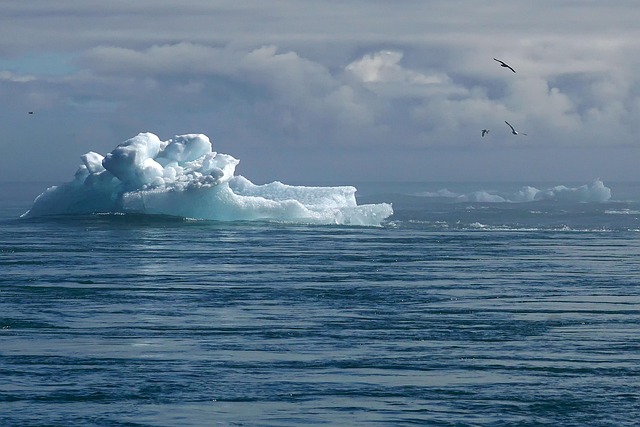In recent decades, the planet has begun to feel the pulse of a rapidly changing climate. Every thunderstorm, every heatwave, every unexpected flood tells a story about the growing intensity of extreme weather. It is within this narrative that the importance of climate awareness becomes unmistakable. When people understand the science, the patterns, and the impacts, they are better equipped to respond, adapt, and shape the future.
The Rising Tides of Extremes
Storms that once were rare now recur with alarming regularity. Hurricanes strike more often and with greater intensity, while droughts extend across seasons that previously had abundant rainfall. Climate awareness is not a mere academic concept; it is a call to notice the subtle shifts in weather that herald larger transformations. By observing the frequency and severity of extreme events, communities can begin to anticipate and prepare for the next surge.
- In the Atlantic, hurricanes have increased in category and duration, amplifying wind damage and inland flooding.
- Urban heat islands now witness record highs during summer nights, stressing power grids and public health systems.
- Floodplains that were once seasonal now endure year‑round saturation, undermining agriculture and infrastructure.
Scientific Foundations
Climate awareness rests on a robust body of scientific research. The greenhouse effect, driven by carbon dioxide and methane, is the primary mechanism by which the Earth’s temperature rises. Climate models—computer simulations that incorporate atmospheric physics, ocean circulation, and land‑surface processes—project that, without intervention, global temperatures will climb more than 3 °C by the end of the century.
These models also reveal a stark link between higher temperatures and extreme weather. Warmer air holds more moisture, leading to heavier rainfall events and intensified storm surges. Similarly, heatwaves become longer and more intense as the climate warms. Understanding these relationships is essential for anyone engaged in climate awareness, because it frames the urgency and scope of action needed.
Community Resilience
Increased knowledge of climate dynamics empowers local communities to build resilience. Coastal towns that have integrated sea‑level rise projections into zoning laws can avoid building on the most vulnerable land. Rural farms that adopt drought‑tolerant crops and soil‑conservation practices reduce the risk of crop failure during prolonged dry spells.
“When we learn about the trends that bring storms and droughts, we no longer feel helpless,” says a farmer from the Midwest. “We can plan for the future, not just react to it.”
Policy and Global Action
Effective climate action requires policies that translate scientific insight into tangible measures. International agreements, such as the Paris Accord, aim to limit global warming to well below 2 °C. However, translating these goals into national commitments demands a high level of climate awareness across governments, businesses, and civil societies. Only when all stakeholders recognize the stakes can comprehensive strategies—such as carbon pricing, renewable incentives, and strict emissions standards—gain traction.
- Strengthening emissions reporting frameworks to ensure transparency.
- Expanding investment in renewable energy to replace fossil‑fuel dependence.
- Implementing adaptation funds that support infrastructure upgrades in high‑risk areas.
Technological Innovations
Innovation plays a pivotal role in mitigating climate impacts. Breakthroughs in battery storage, solar panel efficiency, and carbon capture technology provide pathways to lower greenhouse‑gas concentrations. Meanwhile, smart irrigation systems and precision agriculture reduce water usage and improve yields in arid regions.
Climate awareness fosters the adoption of these technologies by illustrating their benefits in everyday life. When people see how a new photovoltaic design can power a remote village or how a carbon‑capture unit can be integrated into a steel plant, they become allies in the transition toward a low‑carbon future.
The Human Story
Beyond data and models, climate awareness is a human narrative. It is the story of a fisherman who lost his catch to sudden bleaching events, the mother who witnessed her city flood twice in five years, and the youth who leads protests demanding cleaner air. These personal accounts give weight to the abstract numbers, making the climate crisis feel immediate and relatable.
Stories also serve as a catalyst for collective action. When people recognize that their lives are intertwined with those of others across the globe, the motivation to change behavior strengthens. This shared sense of responsibility is the bedrock of effective climate awareness campaigns.
Looking Forward
The path ahead is complex, yet climate awareness offers a roadmap. Education initiatives that weave climate science into school curricula, public campaigns that highlight the local impact of extreme weather, and community forums that foster dialogue all contribute to a more informed populace. As awareness spreads, the pressure on policymakers to adopt bold strategies intensifies.
Ultimately, the future of Earth depends on our collective ability to recognize the signals that extreme weather sends, to interpret them through the lens of science, and to act decisively. Climate awareness is not just a concept; it is a necessity—an essential tool that enables societies to navigate the uncertainties of a warming world.




